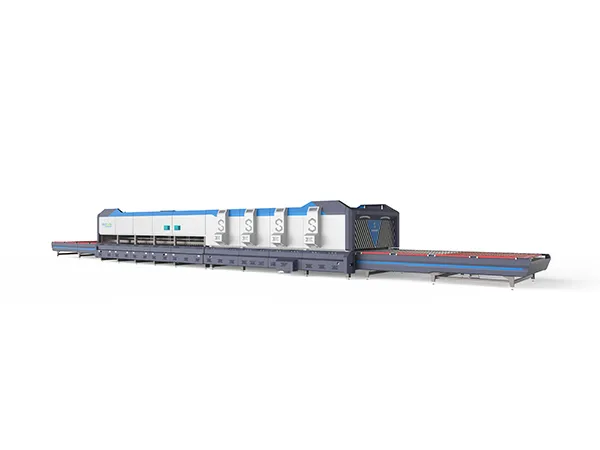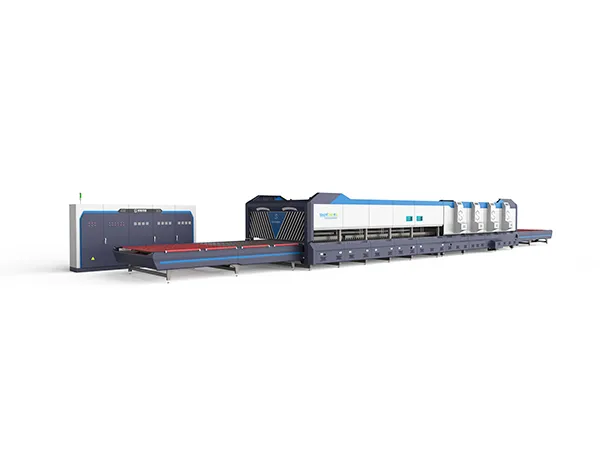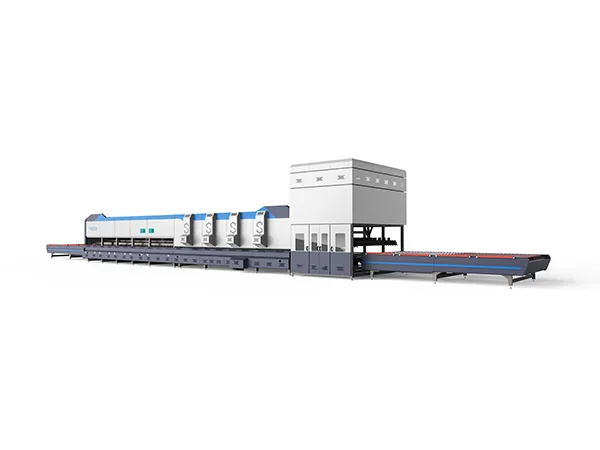Tempering furnaces are used in heat treatment processes to modify the properties of materials, typically metals, after they have been quenched (hardened) to adjust their hardness, ductility, and strength. There are several types of tempering furnaces, each designed for specific tempering needs, production volumes, and heating capabilities.
Tempering Furnace Type

1. Batch Tempering Furnace
Description: A batch tempering furnace is designed to heat a batch of parts all at once. The workpieces are placed in a furnace chamber, heated to the desired temperature, held for a specific time, and then cooled.
Applications: Used for tempering a variety of small to medium-sized batches of parts, typically in industries like automotive, aerospace, and tool manufacturing.
Key Features:
Simple and versatile
Suitable for low to medium production volumes
Can have electric or gas heating
Limitations: Less efficient for high-volume production compared to continuous furnaces.
2. Continuous Tempering Furnace
Description: A continuous tempering furnace allows parts to move through the heating and cooling sections of the furnace on a conveyor or roller system. The furnace is designed for continuous processing.
Applications: Used for high-volume production, particularly in industries that require the mass tempering of parts, such as automotive or large-scale manufacturing.
Key Features:
High throughput for large-scale production
Can provide uniform temperature distribution
Often equipped with automated controls and conveyors
Limitations: Higher initial investment and maintenance costs compared to batch furnaces.
3. Pit Tempering Furnace (or Forge Furnace)
Description: This type of furnace is typically used for larger, heavier workpieces. It’s a vertical furnace where parts are placed in a pit and heated, often used for special tempering processes.
Applications: Ideal for large or heavy parts such as those in the forging, construction equipment, or power generation industries.
Key Features:
Heavy-duty, suited for larger parts
Can handle high temperatures
Often used for specialized, low-volume processes
Limitations: Less common for small- to medium-sized production runs.

4. Electric Resistance Tempering Furnace
Description: In these furnaces, electric heating elements (usually made of resistance wire or coils) heat the chamber. The temperature is controlled by adjusting the electrical current passing through the heating elements.
Applications: Used in applications where precise temperature control is essential, and for relatively low-volume production runs.
Key Features:
Precise temperature control
Clean, efficient, and easy to control
Can be used for both small and medium-sized batches
Limitations: Can have slower heating times compared to gas-fired furnaces.
5. Gas-Fired Tempering Furnace
Description: Gas-fired tempering furnaces use natural gas, propane, or other fuels to generate heat for the tempering process. These furnaces often include a burner system and a heat exchanger to distribute heat evenly.
Applications: Used in industries where natural gas is readily available and cost-effective, and for medium to large production runs.
Key Features:
High heating efficiency
Faster heating times than electric furnaces
Lower operational costs in some cases
Limitations: Requires ventilation systems and can be less precise in temperature control compared to electric furnaces.
6. Induction Tempering Furnace
Description: This type of furnace uses induction heating to heat the workpieces. Induction heating involves generating heat through electromagnetic induction, which directly heats the part without heating the surrounding air or furnace chamber.
Applications: Common in situations where localized, precise heating is required, especially for high-performance parts.
Key Features:
Extremely fast heating, which reduces cycle times
Very precise control of temperature at the surface of the workpiece
Energy-efficient, as the part itself is heated, not the entire furnace
Limitations: Typically more expensive than other types of furnaces and requires specialized equipment.

7. Vacuum Tempering Furnace
Description: In a vacuum tempering furnace, the workpieces are heated in a controlled vacuum environment. This minimizes oxidation and decarburization, which can be a problem in standard air furnaces.
Applications: Ideal for parts that require high cleanliness or for materials that are sensitive to oxidation, such as high-alloy steels, titanium, or tool steels.
Key Features:
No oxidation or decarburization of parts
Controlled atmosphere for precise heat treatment
High-quality surface finish
Limitations: Higher cost due to the vacuum chamber and sophisticated controls.
8. Salt Bath Tempering Furnace
Description: This type of furnace uses a molten salt bath to heat the parts. The molten salt can achieve very uniform heating, and the temperature can be easily controlled.
Applications: Used for parts that require consistent temperature control and uniform heating, often in the aerospace and tool-making industries.
Key Features:
Uniform heat distribution
Can achieve high temperatures easily
High thermal conductivity and low thermal expansion
Limitations: Requires maintenance of the salt bath and safety precautions due to the high temperatures.
9. Carburizing Furnace (with Tempering Cycle)
Description: While carburizing is a hardening process, some carburizing furnaces can incorporate tempering steps in the same system. After carburizing, parts can be automatically moved to a tempering section within the same furnace to complete the heat treatment cycle.
Applications: Used when carburizing and tempering are performed together to produce parts with high surface hardness and toughness.
Key Features:
Integrated solution for carburizing and tempering
Reduces handling and improves cycle times
Limitations: Complex setup and control.
Key Factors for Selecting a Tempering Furnace:

Workpiece Size and Type – Choose a furnace that can accommodate the size and weight of your parts.
Production Volume – Batch furnaces are good for low to medium volumes, while continuous furnaces are suited for high-volume production.
Temperature Control – Some furnaces offer more precise temperature control, which is essential for high-performance parts.
Atmosphere Requirements – Consider whether your process requires a specific atmosphere, such as a vacuum or a controlled gas environment.
Energy Efficiency – Depending on the cost of energy and the nature of your operation, some furnaces (e.g., electric vs. gas) may be more economical.
Cycle Time – Faster heating and cooling cycles can improve throughput and reduce lead times.
Conclusion
The choice of tempering furnace depends on factors like production volume, temperature control requirements, part size, and energy efficiency needs. Batch furnaces are more versatile, while continuous furnaces are more efficient for large-scale production. For specialized processes, technologies like induction or vacuum tempering furnaces may be more suitable.











